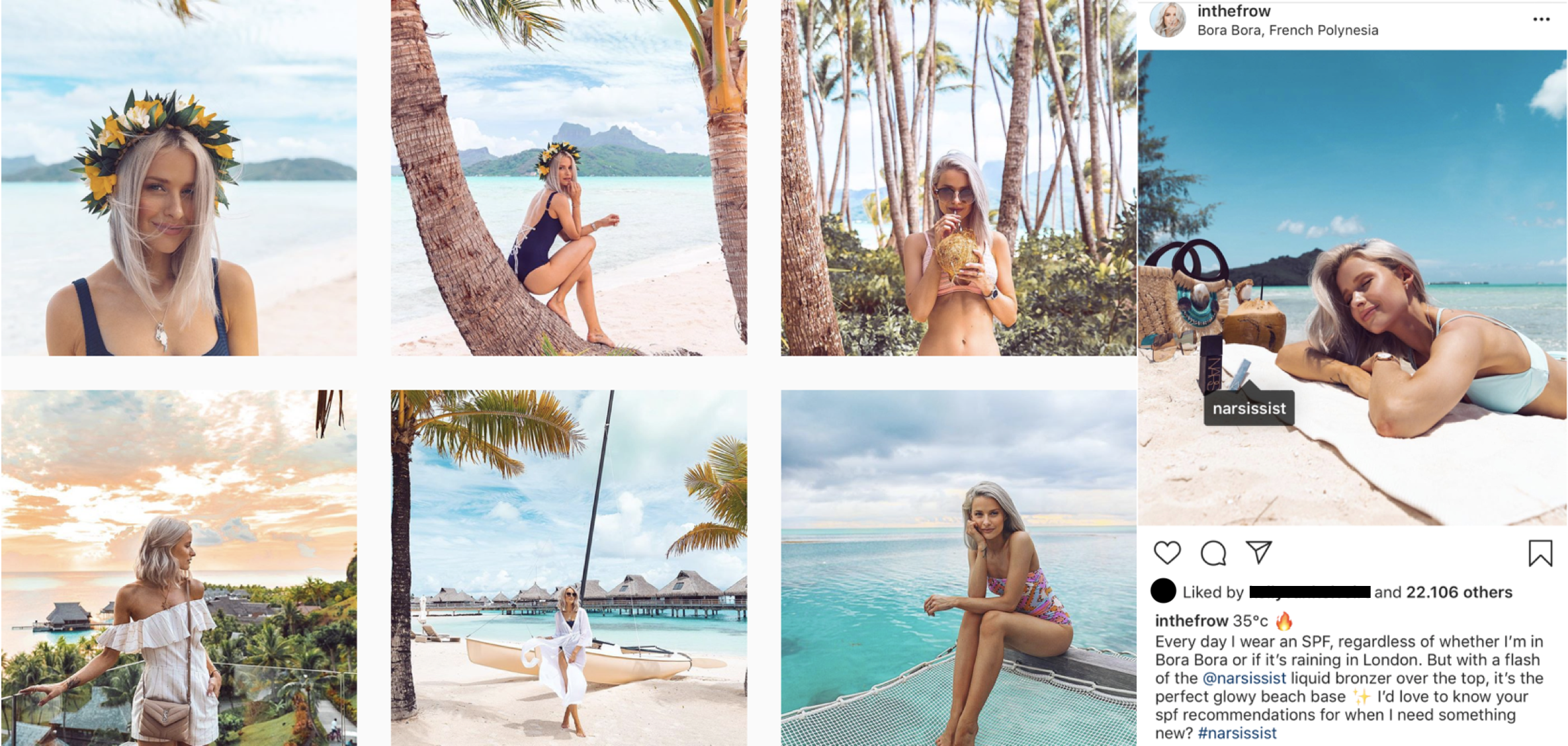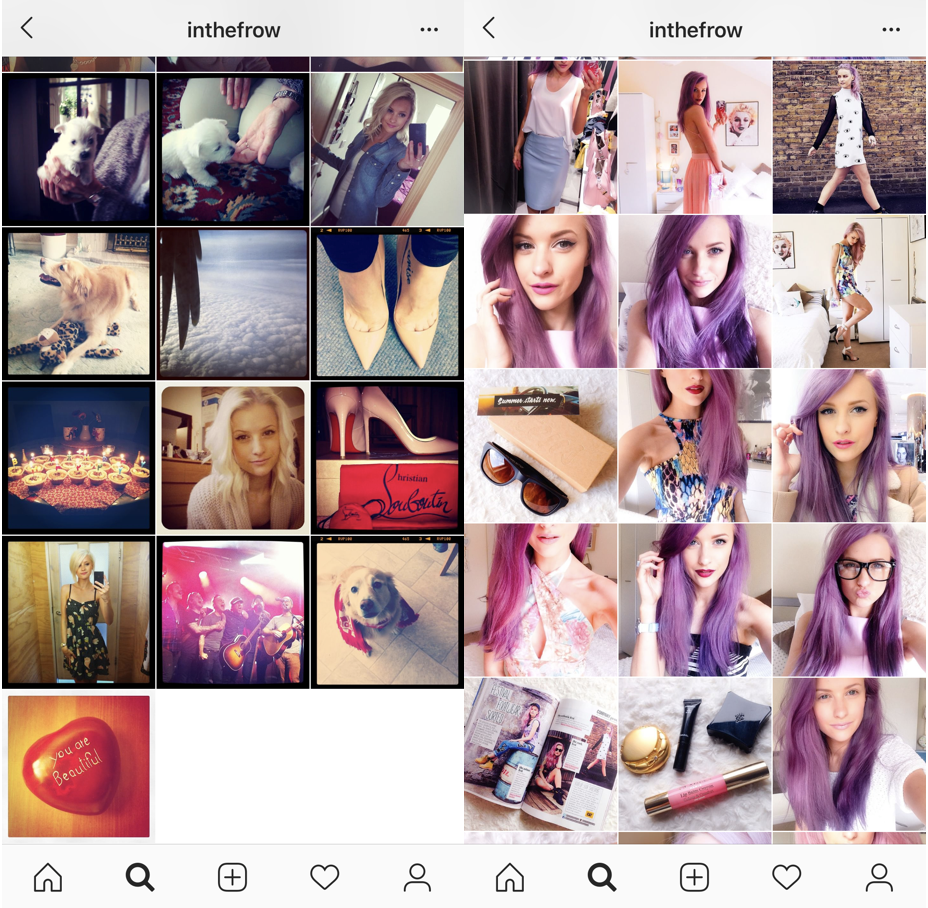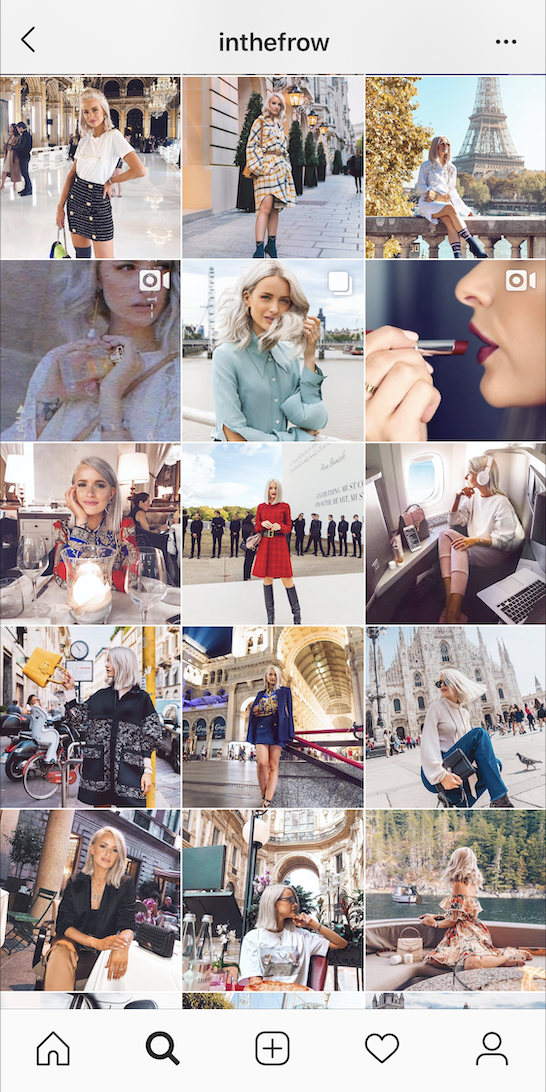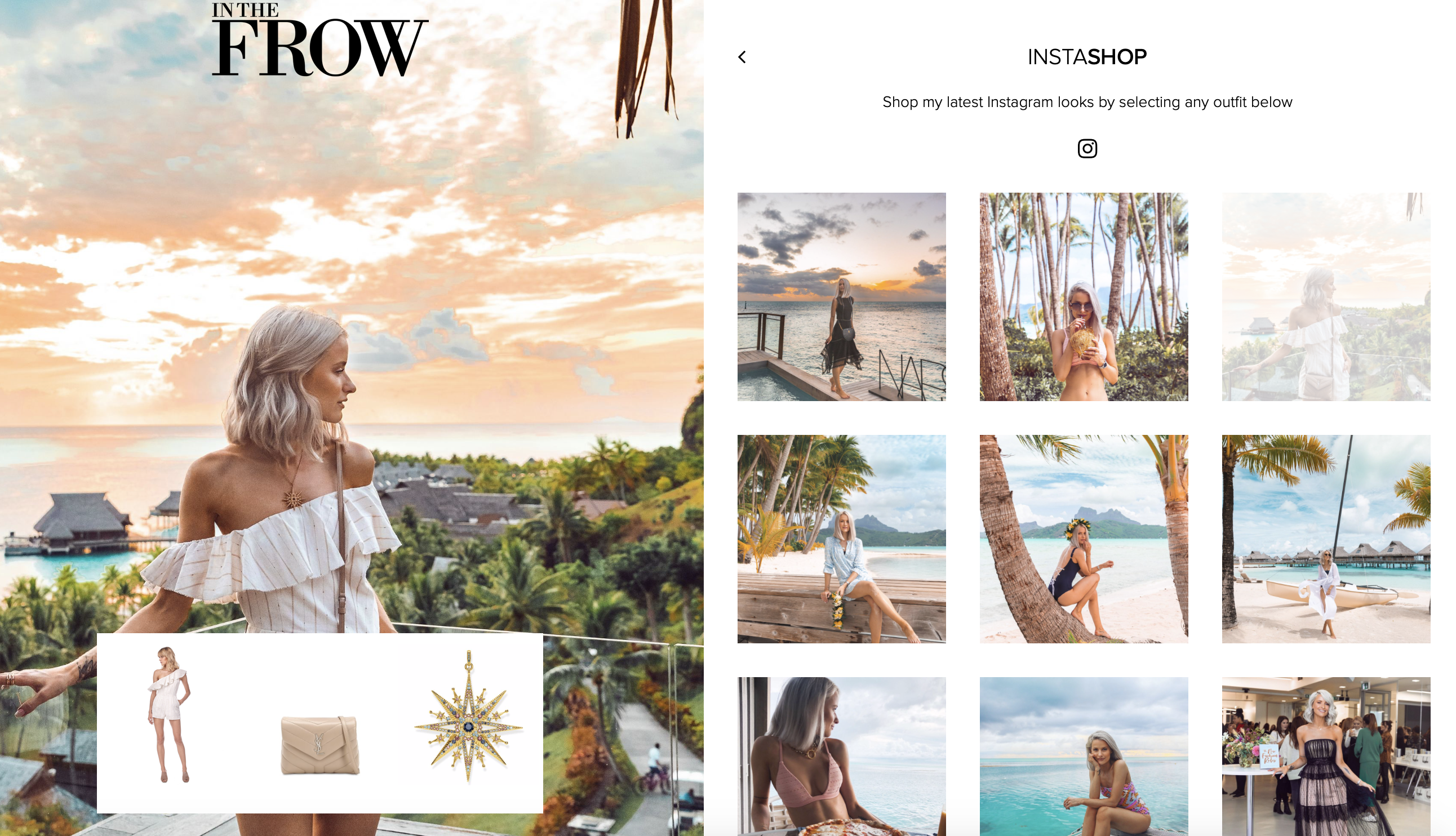
The impact of Instagram influencers
Instagram is a social media platform that is about sharing photos and one-minute videos. Every day, over 50 billion photos are shared on Instagram all over the world. On the Instagram explore page, the most perfect and high-quality pictures are shown. These pictures contain the most inspiring places around the world and amazing outfits. The people behind these pictures often make a lot of money by posting pictures and promoting a brand or product. But with the still increasing amount of influencers on Instagram, how does someone stand out? How do we make the decision to follow an Instagrammer? And what is the impact of the massive amount of influencers that are active on Instagram?
Instagram influencers
In the digital world in which we live today, being an Instagram influencer is a career for many. According to Urban Dictionary, an influencer is “a person with the ability to influence potential buyers of a product or service by promoting or recommending the items on social media”. To be an influencer, someone has to have a big network of followers that can be influenced. Influencers post ‘perfect’ pictures of their lives, their vacations and their fashion styles, and their profile pages are cohesive.
Influencers can be seen as micro-celebrities: “a self-presentation technique in which people view themselves as a public persona to be consumed by others, [they] use strategic intimacy to appeal to followers, and regard their audience as fans.” They are not actual celebrities because they are only famous in a smaller niche, for instance on Instagram and YouTube.
#instafamous
‘Ordinary’ people can become influencers on Instagram, and thus become #instafamous. Becoming Instafamous means that an ordinary person reaches a big audience on Instagram and becomes known to many as an influential Instagrammer. Influencers are quasi-celebrities. ‘Quasi’ is another word for seemingly, this means that influencers are supposedly celebrities. They might be famous on Instagram, but they are not known all around the world, unlike celebrities who are often known by many.
To become an influencer and instafamous one does not need to have a special talent. There are no criteria to become an influencer, so practically anyone can become one. Of course it is not easy to become a big influencer these days, because there are already many people doing the same thing on social media.
Visibility
Hashtags are used to tell something about a social media post. When a hashtag is added to a post, the picture becomes available to those outside someone’s immediate followers. When a person searches a particular hashtag, they will find posts of users that they do not follow, and in this way might find new people to follow.
For influencers, using hashtags is a great way to gain more followers, because if people like someone’s post, they often look at the entire profile and might start to follow the influencer. Because the post reaches a bigger audience, there will also likely be an increase in the number of likes and reactions to a post. Sometimes hashtags are used that have nothing to do with the actual posts. People therefore use hashtags to gain followers by misinforming them about the content. Influencers do not do this often, because followers will then start to question someone’s truthfulness (Jungselius, Hillman and Weilenmann, 2014).
Another way to make a picture more visible on Instagram is to tag brands and friends in photos. Adding a location to the picture can also make a post more visible. Just like searching hashtags, people can also search locations. These Instagram features are all ways to gain more followers from all over the globe. Since these features are used all over the world, when someone uses a ‘popular’ location, hashtag or tag, people from all over the world will easily see an influencer’s post.
Advertising
Companies and brands often use influencers with a big following to promote their products and brands. Companies use a third party to advertise their products, meaning that they pay influencers to have their products featured in one or several posts on Instagram. The higher the amount of followers someone has, the more people are reached when posting a sponsored picture. To be suitable for advertising for a company, someone has to have an attitude and identity that goes well with the brand. It is important that the influencer’s audience goes well with the brand in order for a paid or sponsored post to have an impact on the targeted audience.
To be a successful influencer and to ‘sell’ the product, De Veirman, Cauberghe and Hudders (2017) found that it is important to have a great likeability and to seem trustworthy. When followers feel like they can relate to someone, the audience will be more affected by the products an influencer is promoting. If an influencer makes their audience feel like he or she is their ‘friend’, it is likely that followers will trust this person when posting about a sponsored product.
Since influencers share a lot of their private lives, their audience will feel like they ‘know’ this person and therefore assume what the influencer says and promotes is true. Human beings are easily influenced, so when they see a product that is being promoted in a beautiful picture, everybody wants to have it. Since they trust the influencer as if they were their friend, they feel like it must be worth it to buy the product.
Followers
Any Instagram user can decide for themselves whom to follow and whom not to follow, and how many people to follow. Since every user of the platform is able to ‘create’ their own Instagram feed, people have a greater chance of being influenced by the people they are following. Given that people can make their own decisions, people will follow other users who inspire them, whose style they like, and whose content they like in general. Most users will be easily influenced because all the things they like are shown on their 'personalized' Instagram-feed. It is for this reason that many companies are now using influencers to promote their products.
Most of the time, the audience is aware of the fact that they are looking at a sponsored post because disclosures are used to make them aware of this. When followers are made aware of the fact that a post is sponsored, people will still trust the influencer, because he or she is honest about it. Since it is one’s own choice to press the ‘follow’ button, one often does not care that there are sponsored posts coming across their feed.
Instagram-identity
A person’s identity is built out of the socialization of an individual in several micro-hegemonies. This term was developed by Jan Blommaert and Piia Varis to describe "the multiple sets of norms that govern the details of social life." Each micro-hegemony in which a person creates identity comes with norms, and in that sense it explains a part of someone’s behavior in a certain context. Our identity is built out of a complex of multiple micro-hegemonies, meaning that the integration of a person into multiple micro-hegemonized niches create someone’s identity (See the diggit wiki on identity for a more in depth introduction).
Identity construction within a micro-hegemony is thus not solely a local phenomenon. On Instagram, but also on other social media platforms, light communities emerge. Blommaert & Varis (2015) describe light communities as follows: “The groups that emerge out of the complex patterns of life projects […] are best seen as focused but diverse occasioned coagulations of people. People converge or coagulate around a shared focus – an object, a shared interest, another person, an event” (p. 54). Light communities do not emerge out of people with homogeneous identities, but out of people that share a similar focus. When connecting light communities to Instagram, groups are constantly formed around similar accounts they follow or because of a shared fandom. For instance, people like the same Instagram influencer, and because of this, they feel like a group. They all share a similar thing they like, while still having very different identities and characters.
What we see from the influencers is only one aspect of their identity. Commonly these Instagram influencers operate within certain sub or niched culture or certain verticals of consumer markets, be it bodybuilding, fashion, or studying. The followers who subscribe to one influencer may not be classified into one big social category such as class or ethnicity. Rather, they converge lightly on one specific issue. However, one person may subscribe to multiple genres of influencers online, suggesting their identity is oriented to multiple micro-centres.
On Instagram we often see influencers posting sponsored posts that are loaded with features of someone’s identity. Personal identity features are ‘attached’ to products and come with the things we buy, so what we buy becomes part of our identity. Buying is always an act of identity. Consumption is divided into specific micro-hegemonies. In every micro-hegemony, different features and characteristics of identity are central. Since many micro-hegemonies exist, and they all come with specific identity characteristics, consumption is not a homogeneous phenomenon (Blommaert & Varis, 2015).
In the digitalized world in which we live today, we are always expected to explain aspects of our life, behavior, and identity to others. Social media platforms are a huge part of our lives and people judge others very quickly when looking at one’s Instagram page. Because everyone is judgmental on social media, most people portray the best and perfect version of themselves on Instagram and act like they do not have any flaws. Influencers post idealized pictures, but do these people have the same identity in real life as how they portray themselves on their social media pages? Or do they create another or a partly different identity, to make it look like they are perfect?
Victoria Magrath - @inthefrow
Popular Instagram influencer, blogger and YouTube star Victoria Magrath, also known as In The Frow, is a big hit on Instagram. Starting off as a blogger on her website In The Frow, which stands for ‘in the front row’, she later began using Instagram and YouTube.
Figure 1. Inthefrow's Instagram posts in 2011 (left) and 2014 (right)
Looking back into Inthefrow's Instagram posts to when she started Instagram in 2011 (Figure 1), her posts were far different from how they look now. Back in 2011, she posted pictures that were taken with her mobile phone, and few with Victoria herself in it. The reason for this is that she had not started blogging yet, and her first posts where thus personal pictures she shared with friends and family. In 2014 her Instagram page looks more cohesive, in part because of her hair color, and also because she posts more pictures of herself on her Instagram page.
Looking at her Instagram page from the past two years up until now, we see a ‘real’ influencer. Her profile page is cohesive; the same colors are used in pictures and there are several photos with similar backgrounds or a similar feel posted one after another. Like many other influencers, her page consists of many travel pictures, showing the most beautiful, inspiring places all around the world. Because she travels to places all over the world, and tags places all over the world, this results in a global audience. Inthefrow’s profile page shows the ‘perfect life’ she has, at least this is how it looks to her followers.
Figure 2. Inthefrow's Instagram posts between 20 September and 29 September
Figure 2 shows Inthefrow's posts between 20 September and 29 September. On a third of these posts, the feature ‘paid partnership’ is shown. A few of the other photos and videos only contain brand-tags or brand names in the caption. She still advertises for these brands by tagging them. A reason for the brand-tagging or brand mentioning is that it was Paris Fashion Week in the period these pictures were posted.
Although some pictures do not contain the feature ‘paid partnership’, Victoria does work together with these brands. For example, in these fifteen posts, two posts have @dior and @diormakeup in the caption. When looking at her blog, Dior is among the brands she has worked with. This means that although she might not have been paid to post the picture, she most likely was invited by Dior to come to Paris Fashion Week and her makeup has been done by a Dior makeup artist. Because of this, she still promotes the brand, and thus Dior will be featured on a popular Instagram page.
Her followers see 'perfect' pictures that create the need for the lifestyle and products she promotes. Victoria mentions the brands she promotes in her posts, through this her followers can easily go to the brand's Instagram page. The promoted brand gains a bigger following on their Instagram page, more people will become interested in what that brand has to offer, and more people will start to buy products from that brand.
Recent Instagram posts Inthefrow

Figure 3. Recent posts of Inthefrow with @narsissist
All the pictures in Figure 3 contain the tag @narsissist or #narsissist in the caption. @narsissist is the Instagram page of the makeup brand Nars. Although there is no disclaimer that the posts are paid partnerships, she is promoting Nars. From these pictures, her Instagram-stories, and by looking at other influencers using the same hashtag, we can conclude that she is on a press trip with Nars, where new products are revealed. She shows a sneak peeks of new Nars products in her Instagram-stories, and thus promotes the brand Nars.
Apart from tagging Nars in these pictures, Victoria added the location where these pictures were taken to her posts. The location of the press trip with Nars is Bora Bora, and Victoria posts beautiful pictures showing the prettiest spots of Bora Bora. Since she has a big following, her posts are already seen by many Instagram users. By adding a location to the posts, her posts will be seen by people outside of her immediate followers. When people search on 'Bora Bora' or on #narsissist, they will find Inthefrow's posts. Because of this, she reaches people all around the world, which will possibly lead to an increase in followers.
Figure 4. Inthefrow's 'Insta Shop'
On Inthefrow’s blog, there is a special section called ‘Insta Shop’, when clicking on this, all her Instagram photos appear (Figure 4). Every Instagram photo is linked with the clothes, shoes, and accessories she is wearing in the pictures. This is a smart move as her Instagram-followers have to go to her blog to find what she is exactly wearing in the pictures. Because of this, she will also gains a huge and international audience for her blog.
Instagram influencers and advertisement
Acquiring an influencer to promote a brand has a positive effect on the brand’s reach and marketing. But how do Instagram users feel about the influencing that is happening on the platform?
Many Instagram-users who follow influencers do not mind that promotion and thus influencing is happening. Every Instagrammer is free to follow and unfollow whomever they want. Since it is one’s own choice to press the ‘follow’ button, people are aware that sponsored posts come with certain people they want to follow. Many people follow influencers because they like a certain aspect about this person or this person’s Instagram, or they feel like they recognize a part of themselves in the influencer. Because of a shared aspect of identity, followers will often also like the products that are being promoted.
Similarities between the identity of the influencers and their followers is effective when promoting a brand, because more people will be interested in the product that is being promoted. As long as the influencer is trustworthy, authentic and relatable, most of the followers will not have a problem with promoted posts. Of course, there also will be people who think that Instagram is too commercialized, but which social media platforms are not? These Instagram users can decide for themselves whether or not to follow influencers or to only follow their friends.
References
Blommaert, J., Varis, P. (2015). Enoughness, accent and light communities: Essays on contemporary identities. Tilburg Papers in Culture Studies
Colen, M. (2018). “FYI, I was paid a lot of money to tell you about this product”.
De Veirman, M., Cauberghe, V., Hudders, L. (2017). “Marketing through Instagram influencers: impact of number of followers and product divergence on brand attitude”.
Inthefrow, Inthefrow Instagram. Retrieved September 9, 2018, from https://www.instagram.com/inthefrow/
Jungselius, B., Hillman, T., Weilenmann, A. (2014). Fishing for followers: using hashtags as like bait in social media. University of Gothenburg
Khamis, S., Ang, L., Welling, R. (2017). Self-branding, ‘micro-celebrity’ and the rise of Social Media Influencers.
Leaper, C. (2018) From Wigan to the frow: How Victoria Magrath became the UK's biggest fashion influencer. The Telegraph
Magrath, V. www.inthefrow.com. Retrieved September 11, 2018, from https://www.inthefrow.com
Woods, S. (2016). #Sponsored: The Emergence of Influencer Marketing. University of Tennessee, Knoxville


